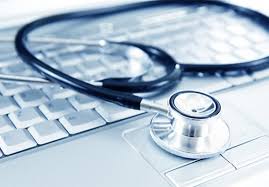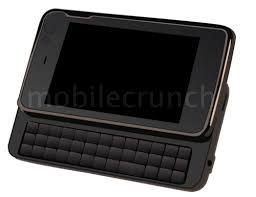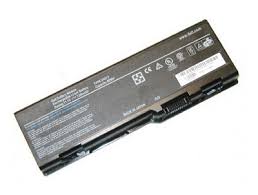These days, more hospitals are moving from Ethernet to Wi-Fi because of the rapid growth of mobile devices that use wireless connectivity. Who needs to be wired into a wall when you're carrying around a tablet PC or pushing a "computer on wheels" through the halls of a hospital?
Many smaller, lighter, thinner computers like the Apple MacBook Air and most of the Windows 8 tablet PCs don't have Ethernet ports on them. Who wants to carry around an Ethernet USB adapter? Switched Ethernet is an Ethernet LAN that uses switches to connect individual hosts or segments.
Showing posts with label wi-fi. Show all posts
Showing posts with label wi-fi. Show all posts
Saturday, April 27, 2013
Thursday, February 16, 2012
ThinkPad Tablet: Turn off Wi-Fi when display is off to save battery life
I've been using the Lenovo ThinkPad tablet for a few months now. This device is an Android slate tablet that is similar to the iPad but includes several distinct features such as the following:
1. Optional active digitizer stylus pen for more accurate writing and drawing (similar to the type of pen that you'll find on Windows-based Tablet PCs)
2. Handwriting recognition software that will convert your scribbles into formatted text (remember the old Apple Newton MessagePad?)
3. Full-size USB port (so you can read those files from your USB flash drive)
4. Full-size SD card slot (full size SD, not just limited to microSD)
5. A mini HDMI port
This device is a nice tablet, but it's certainly bulkier and heavier than many other tablets on the market. Despite the larger size, the battery life just doesn't impress me on the ThinkPad Tablet. One of the main reasons why the battery life is limited is because the Wi-Fi remains on even when the display is turned off. There is an option that allows you to turn off the Wi-Fi when the display is off. Here are the instructions (from Page 38 of the User Manual):
Configuring the wireless network disconnect policy
To get longer battery life, manage your wireless connections more reasonably by configuring the wireless network disconnect policy.
1. Optional active digitizer stylus pen for more accurate writing and drawing (similar to the type of pen that you'll find on Windows-based Tablet PCs)
2. Handwriting recognition software that will convert your scribbles into formatted text (remember the old Apple Newton MessagePad?)
3. Full-size USB port (so you can read those files from your USB flash drive)
4. Full-size SD card slot (full size SD, not just limited to microSD)
5. A mini HDMI port
This device is a nice tablet, but it's certainly bulkier and heavier than many other tablets on the market. Despite the larger size, the battery life just doesn't impress me on the ThinkPad Tablet. One of the main reasons why the battery life is limited is because the Wi-Fi remains on even when the display is turned off. There is an option that allows you to turn off the Wi-Fi when the display is off. Here are the instructions (from Page 38 of the User Manual):
Configuring the wireless network disconnect policy
To get longer battery life, manage your wireless connections more reasonably by configuring the wireless network disconnect policy.
Labels:
Android,
battery life,
lenovo,
Thinkpad,
wi-fi
Monday, January 31, 2011
Working on the plane with my iPad
Over the weekend, I was on a flight from San Francisco to Philadelphia. I was using my iPad the entire time (using in-flight Gogo Wi-Fi) and at the end of the flight, I had over 65% of battery life. I was surprised at how much work I could get done by using an external Bluetooth keyboard.
When I travel in the future, I may end up leaving my laptop at home. I can access my Windows 7 PC remotely using LogMeIn Ignition and I can run a virtual machine of my Windows 7 computer. As I get more proficient at "pinch-to-zoom" and touch tapping, my efficiency on the iPad is definitely improving. Next: I will connect a Bluetooth mouse to my iPad so that I can replicate a true workstation experience.
When I travel in the future, I may end up leaving my laptop at home. I can access my Windows 7 PC remotely using LogMeIn Ignition and I can run a virtual machine of my Windows 7 computer. As I get more proficient at "pinch-to-zoom" and touch tapping, my efficiency on the iPad is definitely improving. Next: I will connect a Bluetooth mouse to my iPad so that I can replicate a true workstation experience.
Labels:
Bluetooth,
Gogo,
iPad,
keyboard,
LogMeIn,
remote access,
virtual machine,
wi-fi,
WiFi
Tuesday, January 25, 2011
Blogging from the plane with my iPad and Gogo Internet
I'm currently in-flight on my way to San Francisco. I'm blogging with my iPad and I'm connected to the Internet via Gogo Wi-Fi access on the plane. I'm typing this using my Bluetooth wireless keyboard. With all these wireless signals onboard, let's hope the plane doesn't malfunction!
It's quite amazing that we now have access to all technology when we're on a plane. I still remember the days when airlines started placing phones on the plane. It was ridiculously expensive to make a call. Now, on-flight Wi-Fi is only $12 for a day pass. That's a very reasonable rate and I'm going to make use of this access since I'm on a long flight.
The iPad has been a great travel companion. It has excellent battery life and the external keyboard has made it possible for me to type a number of documents during this flight (including this blog post).
It's quite amazing that we now have access to all technology when we're on a plane. I still remember the days when airlines started placing phones on the plane. It was ridiculously expensive to make a call. Now, on-flight Wi-Fi is only $12 for a day pass. That's a very reasonable rate and I'm going to make use of this access since I'm on a long flight.
The iPad has been a great travel companion. It has excellent battery life and the external keyboard has made it possible for me to type a number of documents during this flight (including this blog post).
Friday, October 15, 2010
Apple iPad coming to Verizon Wireless (well, sorta)
 Before Verizon Wireless gets the Apple iPhone, it's getting the Apple iPad. Actually, it's not really a Verizon iPad. It's a combined deal where you can buy the iPad (Wi-Fi only) with a small Wi-Fi hub (mobile hotspot) called the MiFi. So, Apple isn't really making a new iPad that's compatible with the CDMA network on Verizon. This is a combo deal that includes a regular iPad that you can buy now from the Apple store plus a Verizon MiFi (which you can also buy right now) so that you can get online anywhere.
Before Verizon Wireless gets the Apple iPhone, it's getting the Apple iPad. Actually, it's not really a Verizon iPad. It's a combined deal where you can buy the iPad (Wi-Fi only) with a small Wi-Fi hub (mobile hotspot) called the MiFi. So, Apple isn't really making a new iPad that's compatible with the CDMA network on Verizon. This is a combo deal that includes a regular iPad that you can buy now from the Apple store plus a Verizon MiFi (which you can also buy right now) so that you can get online anywhere. I guess this is good for all those Android users who don't want to switch to an iPhone but who might be looking for a nice slate. When I travel, I'm seeing more iPads and less netbooks. I wonder when netbooks will reach the point of extinction as they get replaced by thin and light slates like the iPad.
If you buy an iPad and MiFi bundle from Verizon, though, you will only pay $50/month (which is $10 less than a standard MiFi plan). Also, the MiFi doesn't require a two-year commitment. You can get away with a rolling monthly service, with no termination fees. Maybe this is my chance to get a MiFi that has no long-term commitment.
Tuesday, June 15, 2010
Free Wi-Fi coming to all Starbucks
 If you're a medical student and you're looking for a nice place to study, then maybe it's time to head to your local Starbucks. Starting July 1, Starbucks will be providing free Wi-Fi to all customers. That's right. So, if you're a poor medical student unable to afford a Wi-Fi connection fee, then you don't have to worry about paying for the Internet.
If you're a medical student and you're looking for a nice place to study, then maybe it's time to head to your local Starbucks. Starting July 1, Starbucks will be providing free Wi-Fi to all customers. That's right. So, if you're a poor medical student unable to afford a Wi-Fi connection fee, then you don't have to worry about paying for the Internet.Studying for the Boards? Preparing for your recertification exams? Grab your laptop (or tablet or netbook or iPad) and get away from your distractions. I'm not even a coffee drinker (but they do serve hot tea, so you'll find me drinking Tazo green tea).
Friday, June 4, 2010
Intel® My WiFi Technology
If you've ever wanted to convert your laptop into a WiFi Hotspot, then make sure to get a notebook equipped with Intel® My WiFi Technology. Here's a bit of info regarding My WiFi Technology:
Transforms your laptop into a Wi-Fi Personal Area Network
What it is
- A driver and application that doubles the capability of the laptop's WiFi adapter
- An industry first—creating a new, full Intel® My WiFi Personal Area Network inside a laptop—like your own portable Wi-Fi router
- Eight personal Wi-Fi Certified* devices can be directly connected to your laptop, while the laptop is simultaneously connected to the Internet
Why it's compelling—the totally sleek mobile PC!
- Connect anywhere and anytime to your devices—coffee shop, bus, train
- Wirelessly exchange files with a friend's laptop without a USB key
- Transfer photos wirelessly to your laptop—just turn on the camera
- Even remotely control your mouse or iTunes* with an iPhone* application
- Easy to use, and no dongles
Saturday, January 30, 2010
Smartphone tethering speeds faster than free airport Wi-Fi
I'm sitting at the airport in New Orleans because our flight has been delayed. I connected via the airport's free Wi-Fi and my download speed was around 633 kbps. Then, I used my Verizon 3G smartphone to tether and I got download speeds of 1482 kbps. Surprised?
Monday, January 11, 2010
Mobile computers in the hospital
 The last time you were in a hospital, did you notice many mobile computers? You may have seen some LCD monitors mounted on a rolling cart. Maybe you saw some nurses carrying little tablet-shaped mobile clinical assistants (MCAs) like the Motion C5. As hospitals become more digital, they will incorporate more computers into patient rooms, the walls, the waiting rooms, the common areas, and even the operating rooms. We'll have computers everywhere and they'll rely on wireless technology like Wi-Fi to communicate. Doctors will use them to enter orders (CPOE). Others will check labs and other test results on computes. Patient will also get to view some of their own health record information on tablets and other types of mobile devices. Plus, you can expect that doctors, nurses, pharmacists, and social workers will all carry some type of mobile computer. The world of mobile computing will continue to explode in the health care industry as medical professionals recognize their need to stay connected and have access to vital information.
The last time you were in a hospital, did you notice many mobile computers? You may have seen some LCD monitors mounted on a rolling cart. Maybe you saw some nurses carrying little tablet-shaped mobile clinical assistants (MCAs) like the Motion C5. As hospitals become more digital, they will incorporate more computers into patient rooms, the walls, the waiting rooms, the common areas, and even the operating rooms. We'll have computers everywhere and they'll rely on wireless technology like Wi-Fi to communicate. Doctors will use them to enter orders (CPOE). Others will check labs and other test results on computes. Patient will also get to view some of their own health record information on tablets and other types of mobile devices. Plus, you can expect that doctors, nurses, pharmacists, and social workers will all carry some type of mobile computer. The world of mobile computing will continue to explode in the health care industry as medical professionals recognize their need to stay connected and have access to vital information.
Labels:
CPOE,
hospital,
laptop,
MCA,
medical tablet,
Mobile Clinical Assistant,
Motion C5,
Motion Computing,
notebook,
tablet PC,
wi-fi,
WiFi
Friday, January 1, 2010
Full color digital readers coming soon
 When computers first appeared in the hands of consumers, they came with grayscale (aka monochrome) displays. The same was true for laptops and PDAs. Now, we're seeing that trend repeated with digital book readers. Books generally use black ink on white paper, so who needs color?
When computers first appeared in the hands of consumers, they came with grayscale (aka monochrome) displays. The same was true for laptops and PDAs. Now, we're seeing that trend repeated with digital book readers. Books generally use black ink on white paper, so who needs color?As digital readers like the Amazon Kindle, the Sony Digital Reader, and the Barnes and Noble Nook continue to evolve into a type of tablet computer, the need for a color screen will become inevitable. Soon, we'll be back to a tablet PC, but these devices won't have the same type of processing capability as what's found in modern computers. Let's see when Apple releases the iSlate.
So how will these digital readers evolve? I think it's fair to predict that they will incorporate color screens, have Wi-Fi, and have Internet capabilities. They will also be capable of e-mail and some type of multimedia (such as browsing images, playing videos, etc.). Will they get classified as a mobile internet device or MID? Perhaps they will get called a tablet internet device or TID. That will get confusing for physicians who prescribe drugs TID (three times/day).
At the end of the day, they will resemble very simple tablet PCs. How will this impact the medical community? Will health care students and working professionals get more comfortable working with slate tablets?
Friday, November 27, 2009
Using the hospital Wi-Fi system
Thank goodness for free hospital Wi-Fi networks! Typing this from the hospital (wife is read to deliver!)
Wednesday, November 4, 2009
I was tempted to buy a netbook today

I saw what appeared to be a killer deal today: A GPS-equipped Dell netbook that includes turn-by-turn navigation features for $499. (I passed on the TV tuner because I never have time to watch television)
Now, let's step back for a minute. How do you use a netbook in your car? Who needs a netbook when you can simply buy a standalone GPS navigator like a TomTom, Garmin, or Magellan for less than $499?
But then again, who needs a standalone GPS unit when you can simply get a GPS-enabled smartphone and install turn-by-turn navigation software made by TomTom, Garmin, and several other major companies?
Fortunately, I did not purchase this netbook. I have enough computers (including some that have built-in GPS functionality) and I really don't need another gadget right now. My HTC Touch Pro2 works just fine as a GPS navigator. My OQO model 02 and my Samsung Q1 Ultra (Ultra-Mobile PC or UMPC) are great gadgets that are capable of GPS navigation if I pair a Bluetooth GPS. My Lenovo Thinkpad X200 tablet PC has a built-in GPS because of the built-in WWAN radio.
So why was I tempted to buy this Dell netbook? Because you simply don't see too many netbooks advertised as a GPS navigator with turn-by-turn navigation software. As netbooks continue to evolve, perhaps a built-in GPS will become a standard feature. Wi-Fi and Bluetooth and fairly standard features. Built-in WWAN is getting to be a standard feature, and this often means that you'll get a built-in GPS antenna.
Sorry Dell, maybe next time. $499 is just too much. $299 is a different story. Of course, if others are looking for a netbook that includes either a built-in GPS or a built-in TV tuner, then you should take a look at the Dell Mini 10 and 10v (starting at $299, but going up to $499 for the nicer models).
Thursday, October 29, 2009
Broadband providers

How do you define "broadband" as it relates to an Internet connection? If you look on Wikipedia, you'll see that "broadband internet" is "a high data rate Internet access—typically contrasted with dial-up access using a 56k modem." So, almost everything we see is now considered broadband since very few people actually still use 56k modems. Back in my AOL days, I used to have a 56k modem. I still remember all those dial-up Internet Service Providers (ISPs) like NetZero, Earthlink, Juno, CompuServe, and others. Remember those?
Now, we don't even have a phone line in our house. We use fiber optic FIOS and if that ever goes down, I pull out my smartphone. I use my smartphone to tether and get broadband internet connections when I'm traveling or when I'm not in Wi-Fi range. If I'm in a Wi-Fi hot spot, then I'll usually turn on the Wi-Fi antenna. But, if I'm not in a hot spot, then I'll pull out my smartphone and get online.
My colleagues in the UK use service providers like Orange and Vodafone. Some even use T-Mobile (but not to be confused with T-Mobile USA). Over the past few months, I've had the opportunity to learn about Internet and mobile phone providers in Europe. If you're ever looking for an unlocked GSM phone that isn't available in North America, look at these international mobile phone providers.
Thursday, October 22, 2009
Read unlimited free e-books on the Nook by going to B&N
 The Nook is one of the latest digital readers and it uses a novel concept: you can take the Nook into a Barnes and Noble and connect to the Wi-Fi network in the store. Once you're connected, you can read e-books for free while you're in the store. Brilliant!
The Nook is one of the latest digital readers and it uses a novel concept: you can take the Nook into a Barnes and Noble and connect to the Wi-Fi network in the store. Once you're connected, you can read e-books for free while you're in the store. Brilliant!Many people go to the book store to read books. Now, if you have a Nook, you can still go to the book store to read your book. Just sit in the cafe, drink your cup of tea or coffee, eat a snack, and read on the Nook.
Thursday, October 15, 2009
Tips for longer laptop battery life
I'm often asked, "why does my laptop have such short battery life?"
Many people don't realize that notebook battery life ratings are generally estimated as the "maximum" battery life on the lowest power settings. This means:
If you want to improve battery life, make sure you're doing what you can to reduce power consumptions in the areas described above. The easiest way to improve battery life is to decrease brightness and reduce your CPU settings. Turn off your wireless cards if you're not using them.
Many people don't realize that notebook battery life ratings are generally estimated as the "maximum" battery life on the lowest power settings. This means:
- Lowest brightness setting.
- Lowest processor settings (most CPUs will throttle up or down depending on the burden placed on the CPU).
- No use of optical drives.
- No use of any internal communications cards. This includes Wi-Fi, Bluetooth, and internal WWAN cards.
- No use of USB ports or any other power-consuming ports.
If you want to improve battery life, make sure you're doing what you can to reduce power consumptions in the areas described above. The easiest way to improve battery life is to decrease brightness and reduce your CPU settings. Turn off your wireless cards if you're not using them.
Wednesday, October 14, 2009
Computing on the train
Soon, all the major trains, buses, and airlines will offer Wi-Fi and we will look back in a few years at the "dark ages" when we didn't have Internet access on trains and planes. Can you imagine a future where the Internet is everywhere?
Saturday, September 5, 2009
Computers at the beach

OK, so I take my computer with me so that I can keep up with my blogs. A few months ago, I took my computer when we went camping with the family. Over the long weekend, we'll be at the beach. I plan to take my computer so that I can be productive while the kids are playing in the sand. I've taken my OQO model 02 before and I think I'll do the same thing this time. That thing is so tiny that it hardly weighs anything. I use my smartphone to tether and get online when I'm not within any Wi-Fi signals. I haven't seen too many Wi-Fi hot spots at most beaches.
I hope everyone has a lovely long weekend!
Friday, August 28, 2009
Nokia N900 MID tablet

The Nokia N900 is the first Mobile Internet Device (MID) tablet that uses wireless data networks. Unlike prior tablets that only had Wi-Fi access, this device can be used anywhere you have access to a 3G network. You'll get Bluetooth and Wi-Fi on the N900.
So, does it make sense to have a dedicated tablet like the Nokia N900? Or, should the N900 also be a type of smartphone? It's going to run a Linux-based OS called Maemo, so I doubt you'll find many medical applications for it. However, maybe all you really need is a mobile web browser so that you can look your medical questions.
Thursday, July 23, 2009
US Airways to offer Wi-Fi
Sunday, July 19, 2009
Free Wi-Fi while camping

I'm camping this weekend and I'm typing this while my family's taking a nap. Thanks to some free Wi-Fi here at the campsite, I don't need to bother with tethering to get online. Having such a small computer makes it easy for me to get online, even when I'm on vacation. Am I checking my work e-mail? What do you think?
Subscribe to:
Posts (Atom)






